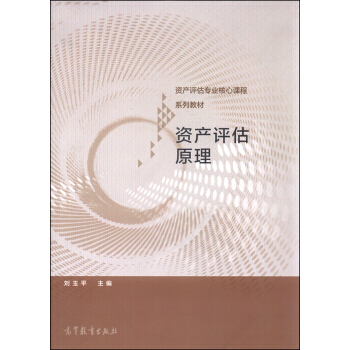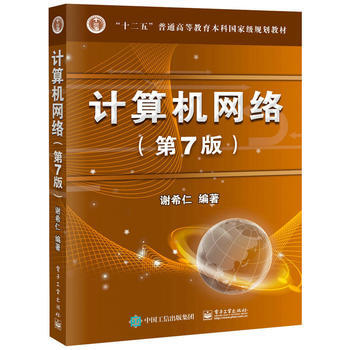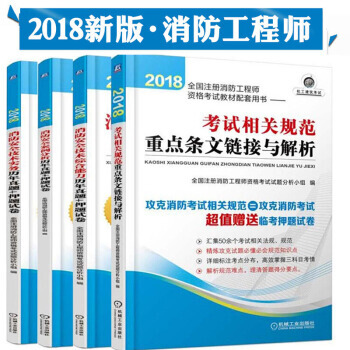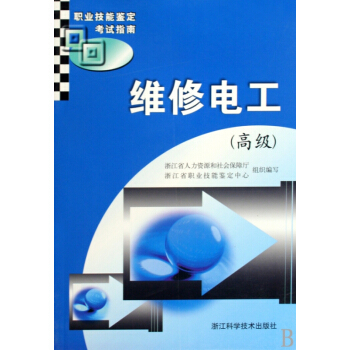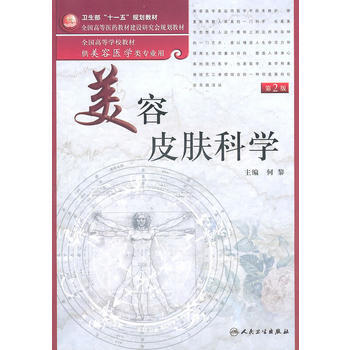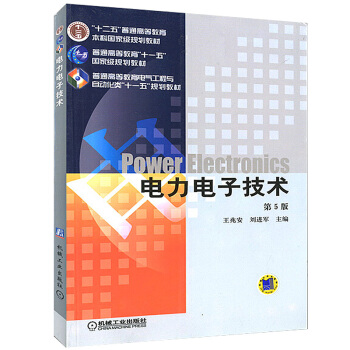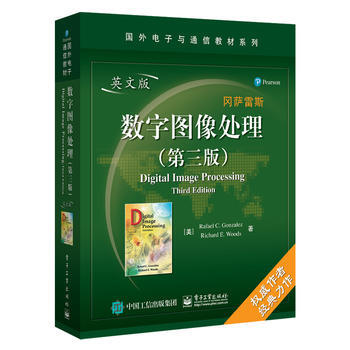

具体描述
基本信息
书名:数字图像处理(第三版)(英文版)
定价:89.00元
售价:51.6元,便宜37.4元,折扣57
作者:(美)Rafael C. Gonzalez(拉斐尔 C. 冈萨雷
出版社:电子工业出版社
出版日期:2017-01-01
ISBN:9787121305405
字数:1776000
页码:976
版次:3
装帧:平装-胶订
开本:16开
商品重量:0.4kg
编辑推荐
本书是数字图像处理的经典教材,内容涵盖数字图像基础、灰度变换与空间滤波、频率域滤波、图像复原与重建、彩色图像处理、小波和多分辨率处理、图像压缩、形态学图像处理、图像分割、表示与描述、目标识别等,全球近700所高校采用为教材。
内容提要
本书是关于数字图像处理的经典著作,作者在对32个国家的134所院校和研究所的教师、学生及自学者进行广泛调查的基础上编写了第三版。除保留第二版的大部分主要内容外,还根据收集的建议从13个方面进行了修订,新增了400多幅图像、200多个图表和80多道习题,同时融入了近年来本科学领域的重要发展,使本书具有鲜明的特色与时效性。全书共分12章,包括绪论、数字图像基础、灰度变换与空间滤波、频域滤波、图像复原与重建、彩色图像处理、小波及多分辨率处理、图像压缩、形态学图像处理、图像分割、表现与描述、目标识别。
目录
Preface 15
Acknowledgments 19
The Book Web Site 20
About the Authors 21
Chapter 1 Introduction 23
1.1 What Is Digital Image Processing 23
1.2 The Origins of Digital Image Processing 25
1.3 Examples of Fields that Use Digital Image Processing 29
1.3.1 Gamma-Ray Imaging 30
1.3.2 X-Ray Imaging 31
1.3.3 Imaging in the Ultraviolet Band 33
1.3.4 Imaging in the Visible and Infrared Bands 34
1.3.5 Imaging in the Microwave Band 40
1.3.6 Imaging in the Radio Band 42
1.3.7 Examples in which Other Imaging Modalities Are Used 42
1.4 Fundamental Steps in Digital Image Processing 47
1.5 Components of an Image Processing System 50
Summary 53
References and Further Reading 53
Chapter 2 Digital Image Fundamentals 57
2.1 Elements of Visual Perception 58
2.1.1 Structure of the Human Eye 58
2.1.2 Image Formation in the Eye 60
2.1.3 Brightness Adaptation and Discrimination 61
2.2 Light and the Electromagic Spectrum 65
2.3 Image Sensing and Acquisition 68
2.3.1 Image Acquisition Using a Single Sensor 70
2.3.2 Image Acquisition Using Sensor Strips 70
2.3.3 Image Acquisition Using Sensor Arrays 72
2.3.4 A Simple Image Formation Model 72
2.4 Image Sampling and Quantization 74
2.4.1 Basic Concepts in Sampling and Quantization 74
2.4.2 Representing Digital Images 77
2.4.3 Spatial and Intensity Resolution 81
2.4.4 Image Interpolation 87
2.5 Some Basic Relationships between Pixels 90
2.5.1 Neighbors of a Pixel 90
2.5.2 Adjacency, Connectivity, Regions, and Boundaries 90
2.5.3 Distance Measures 93
2.6 An Introduction to the Mathematical Tools Used in Digital Image Processing 94
2.6.1 Array versus Matrix Operations 94
2.6.2 Linear versus Nonlinear Operations 95
2.6.3 Arithmetic Operations 96
2.6.4 Set and Logical Operations 102
2.6.5 Spatial Operations 107
2.6.6 Vector and Matrix Operations 114
2.6.7 Image Transforms 115
2.6.8 Probabilistic Methods 118
Summary 120
References and Further Reading 120
Problems 121
Chapter 3 Intensity Transformations and Spatial Filtering 126
3.1 Background 127
3.1.1 The Basics of Intensity Transformations and Spatial Filtering 127
3.1.2 About the Examples in This Chapter 129
3.2 Some Basic Intensity Transformation Functions 129
3.2.1 Image Negatives 130
3.2.2 Log Transformations 131
3.2.3 Power-Law (Gamma) Transformations 132
3.2.4 Piecewise-Linear Transformation Functions 137
3.3 Histogram Processing 142
3.3.1 Histogram Equalization 144
3.3.2 Histogram Matching (Specification) 150
3.3.3 Local Histogram Processing 161
3.3.4 Using Histogram Statistics for Image Enhancement 161
3.4 Fundamentals of Spatial Filtering 166
3.4.1 The Mechanics of Spatial Filtering 167
3.4.2 Spatial Correlation and Convolution 168
3.4.3 Vector Representation of Linear Filtering 172
3.4.4 Generating Spatial Filter Masks 173
3.5 Smoothing Spatial Filters 174
3.5.1 Smoothing Linear Filters 174
3.5.2 Order-Statistic (Nonlinear) Filters 178
3.6 Sharpening Spatial Filters 179
3.6.1 Foundation 180
3.6.2 Using the Second Derivative for Image Sharpening-The Laplacian 182
3.6.3 Unsharp Masking and Highboost Filtering 184
3.6.4 Using First-Order Derivatives for (Nonlinear) Image Sharpening—The Gradient 187
3.7 Combining Spatial Enhancement Methods 191
3.8 Using Fuzzy Techniques for Intensity Transformations and Spatial Filtering 195
3.8.1 Introduction 195
3.8.2 Principles of Fuzzy Set Theory 196
3.8.3 Using Fuzzy Sets 200
3.8.4 Using Fuzzy Sets for Intensity Transformations 208
3.8.5 Using Fuzzy Sets for Spatial Filtering 211
Summary 214
References and Further Reading 214
Problems 215
Chapter 4 Filtering in the Frequency Domain 221
4.1 Background 222
4.1.1 A Brief History of the Fourier Series and Transform 222
4.1.2 About the Examples in this Chapter 223
4.2 Preliminary Concepts 224
4.2.1 Complex Numbers 224
4.2.2 Fourier Series 225
4.2.3 Impulses and Their Sifting Property 225
4.2.4 The Fourier Transform of Functions of One Continuous Variable 227
4.2.5 Convolution 231
4.3 Sampling and the Fourier Transform of Sampled Functions 233
4.3.1 Sampling 233
4.3.2 The Fourier Transform of Sampled Functions 234
4.3.3 The Sampling Theorem 235
4.3.4 Aliasing 239
4.3.5 Function Reconstruction (Recovery) from Sampled Data 241
4.4 The Discrete Fourier Transform (DFT) of One Variable 242
4.4.1 Obtaining the DFT from the Continuous Transform of a Sampled Function 243
4.4.2 Relationship Between the Sampling and Frequency Intervals 245
4.5 Extension to Functions of Two Variables 247
4.5.1 The 2-D Impulse and Its Sifting Property 247
4.5.2 The 2-D Continuous Fourier Transform Pair 248
4.5.3 Two-Dimensional Sampling and the 2-D Sampling Theorem 249
4.5.4 Aliasing in Images 250
4.5.5 The 2-D Discrete Fourier Transform and Its Inverse 257
4.6 Some Properties of the 2-D Discrete Fourier Transform 258
4.6.1 Relationships Between Spatial and Frequency Intervals 258
4.6.2 Translation and Rotation 258
4.6.3 Periodicity 259
4.6.4 Symmetry Properties 261
4.6.5 Fourier Spectrum and Phase Angle 267
4.6.6 The 2-D Convolution Theorem 271
4.6.7 Summary of 2-D Discrete Fourier Transform Properties 275
4.7 The Basics of Filtering in the Frequency Domain 277
4.7.1 Additional Characteristics of the Frequency Domain 277
4.7.2 Frequency Domain Filtering Fundamentals 279
4.7.3 Summary of Steps for Filtering in the Frequency Domain 285
4.7.4 Correspondence Between Filtering in the Spatial and Frequency Domains 285
4.8 Image Smoothing Using Frequency Domain Filters 291
4.8.1 Ideal Lowpass Filters 291
4.8.2 Butterworth Lowpass Filters 295
4.8.3 Gaussian Lowpass Filters 298
4.8.4 Additional Examples of Lowpass Filtering 299
4.9 Image Sharpening Using Frequency Domain Filters 302
4.9.1 Ideal Highpass Filters 303
4.9.2 Butterworth Highpass Filters 306
4.9.3 Gaussian Highpass Filters 307
4.9.4 The Laplacian in the Frequency Domain 308
4.9.5 Unsharp Masking, Highboost Filtering, and High-Frequency-Emphasis Filtering 310
4.9.6 Homomorphic Filtering 311
4.10 Selective Filtering 316
4.10.1 Bandreject and Bandpass Filters 316
4.10.2 Notch Filters 316
4.11 Implementation 320
4.11.1 Separability of the 2-D DFT 320
4.11.2 Computing the IDFT Using a DFT Algorithm 321
4.11.3 The Fast Fourier Transform (FFT) 321
4.11.4 Some Comments on Filter Design 325
Summary 325
References and Further Reading 326
Problems 326
Chapter 5 Image Restoration and Reconstruction 333
5.1 A Model of the Image Degradation/Restoration Process 334
5.2 Noise Models 335
5.2.1 Spatial and Frequency Properties of Noise 335
5.2.2 Some Important Noise Probability Density Functions 336
5.2.3 Periodic Noise 340
5.2.4 Estimation of Noise Parameters 341
5.3 Restoration in the Presence of Noise Only—Spatial Filtering 344
5.3.1 Mean Filters 344
5.3.2 Order-Statistic Filters 347
5.3.3 Adaptive Filters 352
5.4 Periodic Noise Reduction by Frequency Domain Filtering 357
5.4.1 Bandreject Filters 357
5.4.2 Bandpass Filters 358
5.4.3 Notch Filters 359
5.4.4 Optimum Notch Filtering 360
5.5 Linear, Position-Invariant Degradations 365
5.6 Estimating the Degradation Function 368
5.6.1 Estimation by Image Observation 368
5.6.2 Estimation by Experimentation 369
5.6.3 Estimation by Modeling 369
5.7 Inverse Filtering 373
5.8 Minimum Mean Square Error (Wiener) Filtering 374
5.9 Constrained Least Squares Filtering 379
5.10 Geometric Mean Filter 383
5.11 Image Reconstruction from Projections 384
5.11.1 Introduction 384
5.11.2 Principles of Computed Tomography (CT) 387
5.11.3 Projections and the Radon Transform 390
5.11.4 The Fourier-Slice Theorem
作者介绍
Rafael C. Gonzalez(拉婓尔.冈萨雷斯):美国田纳西大学电气和计算机工程系教授、田纳西大学图像和模式分析实验室、机器人和计算机视觉实验室创始人、IEEE会士,研究领域为模式识别、图像处理和机器人,其著作已被全球范围内的600多所大学和研究所采用。
Richard E. Woods 美国田纳西大学电气工程系博士,IEEE会员。
文摘
序言
用户评价
作为一名对人工智能和计算机视觉领域抱有浓厚兴趣的爱好者,我一直在寻找一本能够系统性地为我打下坚实基础的教材。而这本《数字图像处理》(第三版,英文版) 无疑成为了我学习旅程中的一盏明灯。 Gonzalez 在书中展现了非凡的教学能力,他将复杂的概念分解成易于理解的部分,并通过大量的图解和实例,将抽象的理论变得生动有趣。我特别喜欢他对图像增强和图像复原的讲解,他不仅仅介绍了各种技术,更重要的是,他深入探讨了这些技术背后的数学原理和直观的几何意义,让我能够深刻理解每一种方法是如何工作的,以及它对图像会产生什么样的影响。比如,在讲解直方图均衡化时,他不仅仅给出了公式,还展示了直方图的变化过程,让我一目了然地看到了如何通过这种方法来改善图像的对比度。书中对形态学处理的介绍,也让我看到了图像处理在特征提取和对象识别方面的巨大潜力。作者的讲解方式非常注重理论与实践的结合,他总是在介绍完一项技术后,会引导读者思考它在实际应用中的价值。虽然我还没有机会将书中的算法亲自实现,但通过书中的描述和分析,我仿佛已经能够预见到这些技术在现实世界中扮演的重要角色,例如在自动驾驶、人脸识别等前沿领域。这本书为我打开了一扇通往更高级图像分析和理解的大门,让我对未来的学习和研究充满了期待。
评分在决定深入学习数字图像处理领域时,我经过多方比较,最终选择了这本《数字图像处理》(第三版,英文版)。事实证明,我的选择是无比正确的。这本书以其全面而深入的讲解,为我构建了一个坚实的技术基础。作者Rafael C. Gonzalez 以一种循序渐进的方式,从最基础的图像概念开始,逐步引导读者进入图像处理的各个核心环节。我尤其被书中对图像增强技术的阐述所折服,他不仅仅提供了各种增强算法的数学公式,更重要的是,他通过大量的实例和图例,生动地展示了不同算法的原理和效果,让我能够直观地理解这些技术是如何工作的。例如,他对傅里叶变换在频率域增强中的应用讲解,就帮助我理解了如何通过滤波来去除图像中的噪声或突出特定频率成分。书中对图像复原的讨论,也让我认识到图像质量下降的多种原因,以及如何运用各种数学模型和算法来尽可能地恢复图像的原始信息。此外,书中对形态学图像处理的详尽介绍,也让我看到了如何利用这些基于形状的操作来分析和提取图像中的结构特征,这对于后续的模式识别和目标检测至关重要。这本书的英文原版,其严谨的学术风格和清晰的逻辑结构,都为我提供了一个高标准的学习范例。我感觉,通过这本书的学习,我不仅获得了宝贵的知识,更重要的是,我培养了一种严谨的科学探究精神,这对于我未来在计算机视觉和人工智能领域的深造,将是极其宝贵的财富。
评分坦白讲,在入手这本《数字图像图像处理》(第三版,英文版) 之前,我曾对市面上充斥的各种技术书籍感到些许迷茫。但当我开始阅读Gonzalez 的这部作品时,我才意识到,这不仅仅是一本技术手册,更是一部富有洞察力的学术专著,它以一种极其系统和严谨的方式,构建了我对数字图像处理的整体认知框架。作者在开篇就为读者描绘了一个宏大的图景,清晰地梳理了图像处理的学科定位、发展历程以及其在现代科技中的关键作用。随后,书中便循序渐进地深入到各个技术层面。我尤其欣赏其对图像增强技术的处理方式,它并非简单地罗列各种滤波器,而是深入剖析了不同增强方法(如对比度拉伸、直方图均衡化)的数学原理,并详细解释了它们各自的优劣势以及适用的场景。这种细致入微的讲解,让我能够根据实际需求,灵活地选择和应用最适合的技术。书中对图像复原部分的处理同样令人称道,作者通过对噪声模型、退化函数等概念的深入剖析,使得我能够理解为什么某些图像会失真,以及如何通过各种滤波器和算法来尽量恢复其原始质量。此外,形态学处理和图像分割章节的内容,更是将图像处理的应用推向了更深的层次,让我看到了如何通过这些技术来提取图像中的关键信息,实现对图像内容的更精细化分析。整本书的编排结构合理,逻辑严密,语言精准,虽然是英文原版,但其清晰的论述风格,使得非英语母语的读者也能较好地理解。
评分这本《数字图像处理》(第三版,英文版) 让我彻底改变了对这个领域的看法。在此之前,我总觉得图像处理是一门枯燥、晦涩的技术,充斥着各种复杂的数学公式和算法,仿佛只属于那些理论派的学者。然而,当我翻开这本书,立刻被其条理清晰的叙述和深入浅出的讲解所吸引。作者Rafael C. Gonzalez 的功力可见一斑,他能够将看似高深的理论,用生动形象的比喻和贴近实际的例子娓娓道来,让我这个初学者也能迅速理解并产生浓厚的兴趣。书中对于基本概念的介绍,例如像素、灰度、颜色空间等,都做了详尽的阐述,并且配以大量的图示,使得抽象的概念变得可视化,易于接受。更让我印象深刻的是,作者并没有止步于理论的介绍,而是花了不少篇幅讲解各种图像处理技术的原理及其应用场景。从图像增强到图像复原,再到形态学处理和图像分割,每一个章节都像是一次精心设计的探索之旅,带领我一步步深入图像处理的核心。我特别喜欢书中对每一种算法的介绍,不仅仅是给出公式,更重要的是解释了算法背后的逻辑和它在解决实际问题中的作用。这种“知其然,更知其所以然”的学习方式,极大地提升了我对知识的理解深度,也让我看到了图像处理在现实世界中的巨大价值,比如医疗影像分析、安防监控、以及我们每天都在使用的社交媒体滤镜等等。这本书就像一位经验丰富的向导,在我探索数字图像处理的广阔世界时,为我指明了方向,点亮了道路。
评分我在寻找关于数字图像处理的权威资料时,偶然发现了这本《数字图像处理》(第三版,英文版)。这本书的质量远远超出了我的预期,可以说是一部涵盖了数字图像处理核心概念和技术的经典之作。作者Rafael C. Gonzalez 拥有深厚的学术造诣和丰富的教学经验,他将一个庞杂的学科领域,以一种极其精炼和系统的方式呈现给读者。书中对图像增强的阐述,从空间域和频率域的各种技术,都进行了深入的剖析。我特别欣赏他对不同滤波器的解释,不仅说明了它们的数学原理,还通过图示展示了它们对图像的实际影响,让我能够清晰地辨别它们的优劣和适用性。此外,书中对图像复原的讲解,也让我对如何处理模糊、噪声等问题有了更深刻的认识。他详细地介绍了各种退化模型和逆滤波、维纳滤波等复原技术,并分析了它们在不同场景下的表现。让我印象深刻的是,作者并没有停留在对经典技术的介绍,还涵盖了形态学处理、图像分割等更具挑战性的内容,这些都是实现更高级图像分析的基础。这本书的英文原版,语言严谨而流畅,即使对于非英语专业背景的读者,其清晰的逻辑和丰富的插图也能提供极大的帮助。我感觉,通过阅读这本书,我不仅学习到了技术,更重要的是,我建立起了一种科学的、系统性的图像处理思维方式。
相关图书
本站所有内容均为互联网搜索引擎提供的公开搜索信息,本站不存储任何数据与内容,任何内容与数据均与本站无关,如有需要请联系相关搜索引擎包括但不限于百度,google,bing,sogou 等,本站所有链接都为正版商品购买链接。
© 2026 windowsfront.com All Rights Reserved. 静流书站 版权所有





